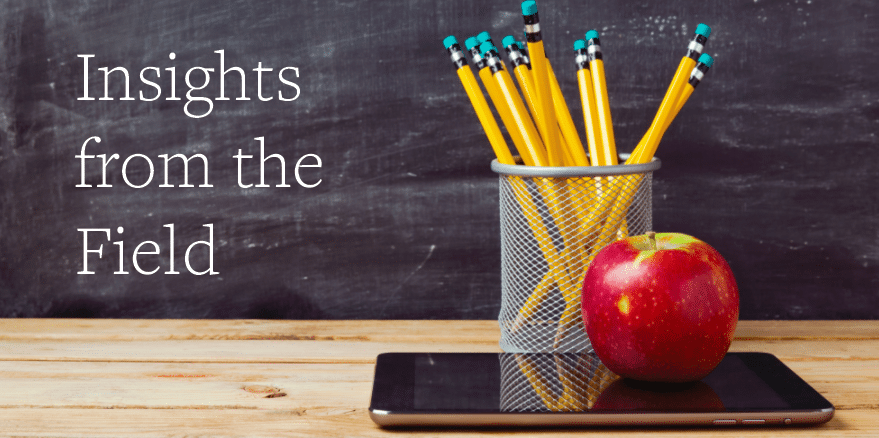Conversations around blended learning often focus on devices, software, and classroom layouts, but some of the most powerful benefits of blended learning are the ways in which it allows teachers to have richer and more meaningful interactions with students, parents, and colleagues. Many blended-learning technologies and content platforms provide teachers with new communication tools to message parents about their students’ learning growth or to read and comment on students’ writing assignments in real time. Student learning data from blended-learning software can also help teachers to have more objective and constructive conversations around student learning growth with students, parents, and colleagues.
In this post, I share excerpts from my latest blended-learning teacher interview with Sean Griffin, a 9th-grade biology teacher at Summit Rainier, a high school in the Summit Public Schools, a charter network located in the San Francisco Bay Area. Sean explains how blended learning has allowed him to be more in touch with his students and to collaborate with his colleagues. He also shares thoughts on how technology could help strengthen parent involvement.
Thomas: How has blended learning changed your practices?
Sean: First of all, technology has made it faster and easier for me to access not only quantitative student data, but also qualitative data like students’ essay responses. I can log in to an assignment as my students are working on it to see how they doing at building their cognitive skills and if they are struggling with particular aspects of the assignment. Previously, it was hard for me to assess how my students were doing as they worked through an assignment and I relied a lot on social and emotional cues to determine if they were progressing or struggling. Now I have data to back up my perceptions and show me how my students are doing at any moment.
Additionally, because content is covered mostly online, there are a lot less of those “stand and deliver” types of lessons. We actually dive deeper into topics because our class time now focuses on projects. And a lot of the projects we do in biology have a social justice spin that makes them more relevant to students’ lives. For example, students will answer questions like, “How does this affect you? How does this affect where you live? Your family? Your community?” This makes the projects more accessible to students and provides context for why the topics we study are important.
Lastly, I feel far more in touch with my students and more able to reach out to them. As they work on a document, I can actually send them a message in that moment and give them feedback. It’s made my students more aware of what they should be doing at any given moment, and it makes it easier for me to diagnose the breakdowns in their understanding. I can now ensure that my students are making progress on a regular basis, as opposed to just hoping that they understand the learning objectives by the end of the project or test.
Thomas: How has blended learning changed your relationships with your students?
Sean: Blended learning has made all of my students more present during class and made it easier for me to appeal to what they need in order to stay focused. With some students, all I have to do is give them the instructions and the information they need, and they get right to work on their own. Others need to be challenged because they may not want to challenge themselves. By looking at these students’ work online as they complete it, I can see when they need to be challenged. And because I don’t have to spend class time lecturing, I have more opportunities during class to work with them and challenge them. Still others need help because they don’t understand something about an assignment. With the software I can see what part of the the assignment they’re struggling with before they even come to me for help. The blended-learning approach also makes it more comfortable for them to get help because they don’t feel like they’re being put on the spot in front of their peers like they would if they asked a question during a lecture. It kind of levels the playing field and has made all of my students a little bit more comfortable being part of the class.
Thomas: What do you wish technology could do that it doesn’t do yet?
Sean: One thing I’d like to see is greater ability to connect with parents. Just like parents are capable of logging on to Facebook to check what their family members and friends are up to, I want them to be able to easily access what their student is working on, what’s actually happening at their student’s school, and ask, “How can I be a part of that? How can I have my voice heard?” I want them to be empowered to take a more active role in their students’ learning, rather than just being supportive and encouraging at home.
Thomas: What do you see as the biggest benefit of blended learning?
Sean: I think more than anything, blended learning has given me many new ways to connect with the people at my school. For one, my co-workers and I have regular meetings in which we’re able to step back and use data to diagnose gaps in our students’ abilities and then use that data to figure out what has and hasn’t been working for our students. When it comes to connecting with my students, blended learning has helped me feel empowered and has made me a stronger teacher. The ability to connect with students is truthfully the most rewarding part of my job.



